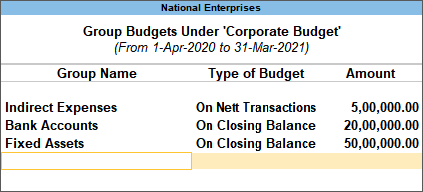
Let us begin by exploring the zero-based budgeting meaning. Zero-based budgeting or ZBB is budgeting with a reset button as it starts with zero after every period. Every new budget that is created starts from zero and the budgeting is independent of earlier targets set by the business. It is one of the most sustainable cost savings methods when planned and implemented correctly. Zero-based budgeting has been found to reduce SG&A costs anywhere from 10% to 25% within a year. Businesses that have properly implemented ZBB have found to be more productive in the long run when they really drilled down and found the cost drivers before embarking on the ZBB journey.
ZBB doesn’t mandate that cost-cutting occurs to the bone as the cost reduction depends on the top-down target which means it varies from business to business. A myth that is popular is that zero-based budgeting takes ages to come into effect and it is too cumbersome. While it is true that the process is effort-inducing, ZBB can take less than 1 year to come into effect. Zero-based budgeting involves building a culture of managing costs so it isn’t the responsibility of a single individual. It makes cost management practices be followed by all employees so everyone is a part of reducing business costs. ZBB is structured and organized.A budget is a plan which predicts the expenses, profits, and revenue of a business. For example, a business can have different budgets for production, department, capital expenditure, and sales. A budget is future-oriented as it projects what activities a business will undertake and the financial plan of doing them. Businesses create a master budget that contains the major points of various budgets. Separate budgets are created to specify details of those particular budgets. A budget is regularly reviewed and tweaked so that it best reflects reality. The budget amounts are compared to the actual amounts and the difference is known as the variance.
The zero-based budgeting process outline is as follows.
Step 1: Business goal
When the new accounting period starts, the first step is to clarify and specify your business goals. Is your main aim to cut costs or is it to increase profits or both? Start with a single business goal and then ensure that the goal is measurable.
Step 2: Activities to achieve the goal
This zero based budgeting step involves the activities that you need to undertake to achieve the business goals you set in the first step. You need to take a good look at the best way to allocate resources for achieving the said goals.
Step 3: Determine cost drivers
Next, you must determine the costs associated with the actions you need to perform to achieve business goals. Add the costs that are already associated with operating and maintaining your business if those are necessary expenditures.
Following the zero-based budgeting, you need to implement the tasks you deem to be most important and follow the budget as you created it. After the period is over, you need to measure the real result with the expected results to determine if the goals are achieved. The next budgeting period will start with zero again and the cycle will continue.
Businesses that are struggling to effectively manage their costs can make use of zero-based budgeting. ZBB is a more thorough and strict form of budgeting that requires time to implement. Businesses that have a cost reduction target of 10 per cent or less can make use of this type of budgeting. It is also suitable for businesses that are willing to take on the challenges posed by zero-based budgeting. Zero-based budgeting requires training as it requires the creation of a cost-saving culture among employees. Businesses that are willing to put in the effort can consider using zero-based budgeting as it is most likely to bear fruit in the long term.
Zero-based budgeting can be used by businesses of all sizes and all types as it can lead to big savings over time. Business owners often wrongly believe that ZBB is only for businesses that are unable to grow. Businesses can implement zero-based budgeting for growth as it can act as a growth booster. It does this by allocating the unproductive costs to productive endeavors. Small businesses and growing businesses can effectively use zero-based budgeting for better growth in the short term. It can also be used by businesses that are using traditional cost-cutting methods but want a more cost reduction.
Zero-based budgeting is best explained with an example. Let us assume you run a beauty parlour. You purchase hair oils, creams, facial kits, and so on for $20,000. When you sit down to create a budget, you notice you can make some products with natural ingredients so now you need to only buy $15,000 worth of products. This is the new expense budget. Next, you realize that you leave the lights on for far too long than necessary. You can save on your electricity bill by turning off the lights when not in use. This can save you an additional $500. You realize disposable items can be used which are cheaper and economical so you save an additional $1000.
Here is how zero-based budgeting differs from traditional budgeting.
Zero-Based Budgeting | Traditional Budgeting |
It does not take into account the budgets that were created the previous year or the years prior. It always starts budgeting from scratch which is zero. This means always looking at budgeting with a fresh outlook and not having any assumptions as well as targets from previous years. | It involves tweaking budgets that were made in the past by making adjustments so they are close to the real expenditures that take place in the business. Traditional budgeting always takes into account what was done previously and how it was done. |
Zero-based budgeting requires justification of expenditure. Every dollar is accounted for in this type of budgeting, making it more thorough and realistic. It involves high visibility into the various cost drivers making this type of budgeting a more sustainable cost reduction approach. | Traditional budgeting takes a lenient approach and it is mainly used to drive revenue rather than look for ways to reduce costs from individual units. It isn’t so specific about accounting for every dollar. It involves an increase in spending or cost reduction, but not to the minute level of zero-based budgeting. |
It requires more effort and time because everything is analyzed deeply before the preparation of a budget. Moreover, training is required to ensure the budgeting is implemented correctly. | It is generalized and requires less effort and time to create when compared to zero-based budgeting. Implementation of traditional budgeting isn’t as effort-inducing in comparison thereby allowing every type of business to easily try it. |
Zero-based budget spending decisions are made by managers. The spending depends on which activities are performed and how they should be performed so they can be cost-effective. The focus is more on optimizing costs rather than just revenue increase. | Traditional budget spending decisions are taken by the top management of a business. It leans more towards how business activities should be performed. It doesn’t go deeper such as which activities should be given priority. |
It is better at connecting cost reduction with sets of business activities. This makes it much clearer to follow and implement. It divides the activities according to which department it needs to be done by and so on. | It is more about determining a change that is applied to all such as an increase in spending by 1%. This generic nature doesn’t specify in detail how the activities are tied to the budgets making it confusing to implement. |
A lazy approach to budgeting will never suffice because a budget can act as an outline and a solid plan to take your business in the right direction. Accounting software enables businesses to better manage their budgets and allocate funds for maximum cost savings. TallyPrime is an accounting software solution that enables you to create budgets for groups, cost centres, and ledger accounts. You can create a hierarchy of budgets with a master budget and sub-budgets underneath it.
